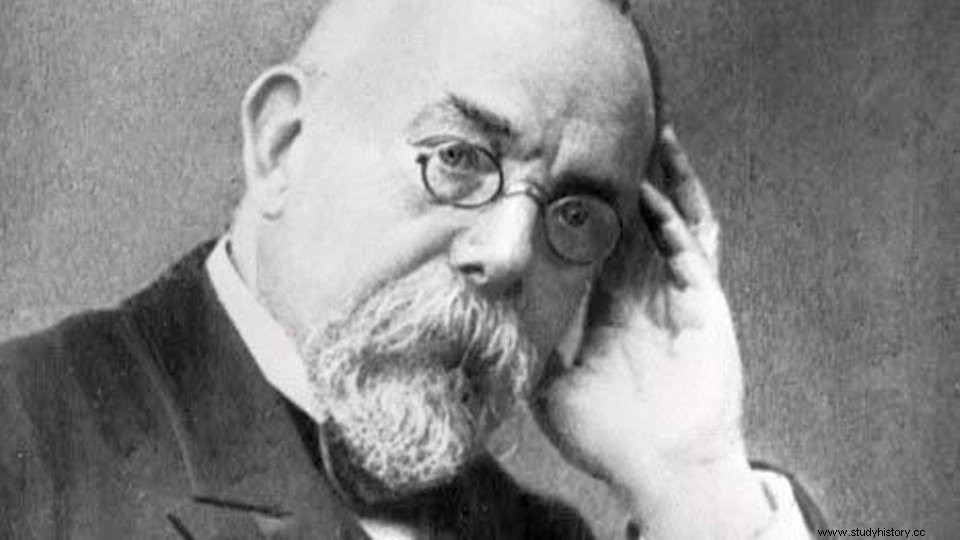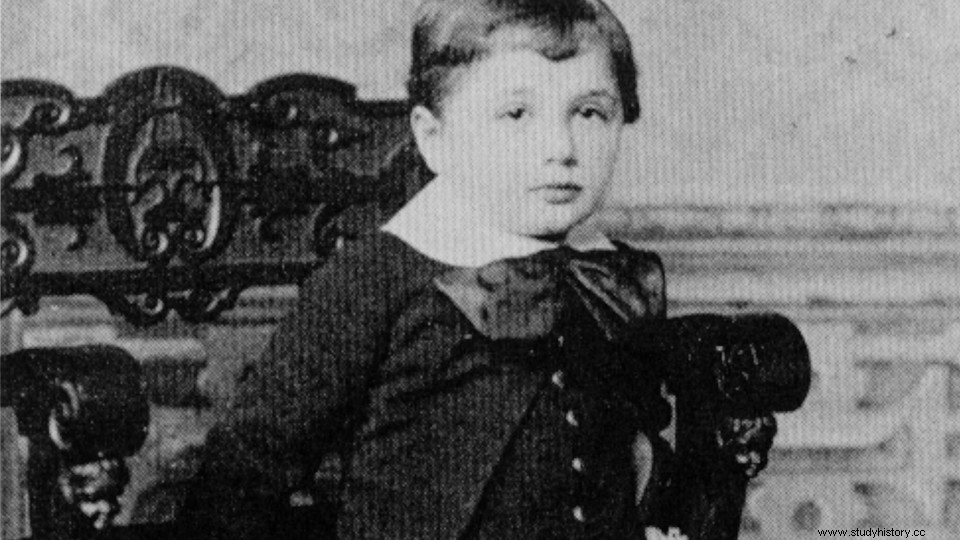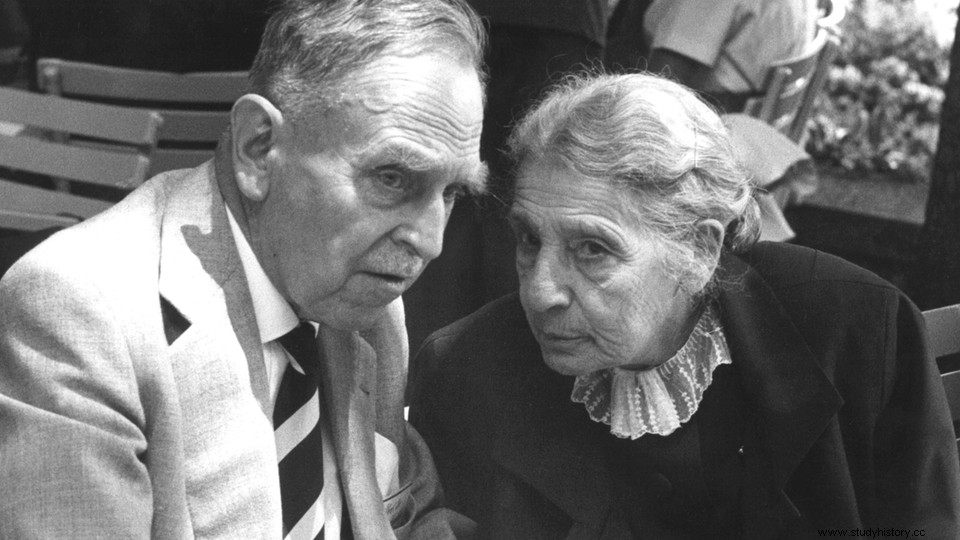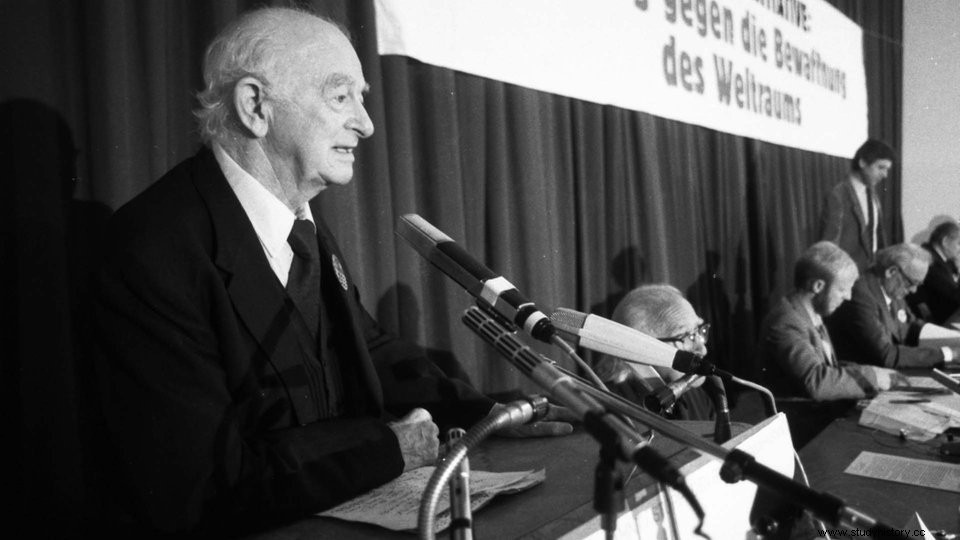More than 750 researchers, writers and politicians have received the Nobel Prize so far. If you compare the CVs, the environment and the places of origin of the award winners, patterns become apparent. Women, for example, often get nothing.
An award of the industrialized nations
A particularly large number of prizes go to personalities from western industrialized countries:Most of the prizewinners come from the USA, England, Germany and France. In the natural sciences, this is partly due to the fact that the research teams are well established and well funded.
On the other hand, only former laureates and selected professors may nominate a researcher for the Nobel Prize and write reviews. In the course of their research careers, the scientists presumably also evaluate each other - the Nobel Prize system thus strengthens itself.

Prizewinner 1905:Robert Koch
Up until the Second World War, German universities were leaders in many areas, from medicine to basic research in physics. A small selection:
Max Planck was honored in 1918 for his quantum theory, Werner Heisenberg for the discovery of quantum mechanics; Adolf Windaus (1928) and Richard Kuhn (1938) received the Nobel Prize in Chemistry for their research into vitamins.
The bacteriologist Robert Koch discovered the tuberculosis bacterium in 1882 and a year later the causative agent of cholera. With his research into hygiene, he helped to significantly reduce the mortality rate. Koch received the Nobel Prize in Medicine in 1905 for his work on tuberculosis.
After World War II, the focus shifted. Since then, the majority of award winners have come from the USA. Prize winners who are not from the USA or Europe are rare.
The most important skills
In order to one day win the Nobel Prize, various factors must come together:curiosity and talent, for example, the right family and school environment and the opportunity to work on specific problems with scholarships and research contracts.
But most important is the ability to think outside the box. This is shown by the example of Klaus von Klitzing, who received the Physics Nobel Prize in 1985 for discovering the quantized Hall effect. All experimental data were published two years before its discovery.
"Anyone who can read the literature has had the chance to discover the quantum Hall effect and get the Nobel Prize for it," Klaus von Klitzing later said.
But the fact that he finally interpreted the unexpected measurement results correctly was also due to vacation jobs as a student trainee long ago, which gave him a different perspective than his colleagues.
His discovery of the behavior of resistances in magnetic fields was not only a sensation for physics, but also for the development of highly integrated switching elements. It was the basis for calibrating electronic measuring devices.
Formative childhood experiences
Most Nobel laureates turned to science from an early age. Albert Einstein, who was awarded the Nobel Prize in Physics in 1921 for his theory of relativity, had his pivotal experience as a young boy following the mysterious movements of a compass.

Allow me:Albert, four years old, future genius
The British chemist Dorothy Crowfoot Hodgkin, whose work on the X-ray structure analysis of atoms brought decisive advances in the development of drugs such as insulin, also remembers such an experience.
When she was ten years old, she learned from a tutor how to grow crystals from saturated solutions during an introduction to chemistry. "I was instantly captivated by the elegance and beauty of the crystals."
Beauty and elegance, as well as the spirit of the game, are important to most award winners. Many of them play an instrument or even tend towards a career in music.
Albert Einstein, for example, played the violin. Manfred Eigen, who was awarded the Nobel Prize in 1967, vacillated between studying chemistry and music for a long time.
The chemist Richard Ernst originally wanted to be a composer. In 1991, Ernst received the Nobel Prize for his investigations into nuclear magnetic resonance spectroscopy:"What I was doing back then actually had a lot to do with music. I analyzed frequencies and, so to speak, separated certain tones from one another."
Research rarely succeeds alone
Learning from one another and listening to one another is also indispensable for the natural sciences. Hardly any important development can be achieved on your own these days, research groups with more than 80 participants and scientific articles with 15 or more authors are not uncommon.
That's why Klaus von Klitzing's first question when he took the call from Stockholm was who he was sharing the prize with.
It is often criticized that the Nobel Prize, which can be awarded to a maximum of three people in one subject, no longer does justice to today's reality and is based on an outdated researcher model of the lonely genius.
It is not uncommon for institute directors to take credit for the work of their assistants.
Far too rare:female Nobel Prize winners
Lise Meitner (1878-1968) is such a case. The Austrian-Swedish physicist researched radioactive elements together with Otto Hahn for more than 30 years.
However, Hahn alone received the Nobel Prize for the discovery of nuclear fission in 1944, although Lise Meitner was significantly involved and provided the physical explanation for the discovery.

Lise Meitner worked on Otto Hahn's website from 1908 to 1938
If you look at all Nobel Prize winners, there are just 49 female prize winners compared to 825 men. An image that is also reflected in the presence of women in top positions in research.
Living with the price
And what is life like after the award? The US physicist Dao Lee, born in 1957 at the age of 31, is said to have said:"My God, what about the rest of my life?"
Nobel Prize winners are in the public eye. They automatically become representatives of their profession and their country. They receive invitations to numerous congresses and are asked for their opinion on political issues, regardless of their competence. At a young age, this can hinder further research work.
On the other hand, the example of Klaus von Klitzing shows the positive weight that the Nobel Prize can have in public. In order to keep him at his research institute in Stuttgart, the state of Baden-Württemberg increased the funds for his institute – neighboring Bavaria had tried to entice him away.
As a result, the Federal Ministry of Research donated a research prize that is available to young scientists without bureaucracy for their self-chosen projects.

Pauling capitalized on the fame and pushed through a ban on above-ground nuclear tests
Researchers such as Albert Einstein and Linus Pauling, winners of the 1954 Nobel Prize in Chemistry, used the global reputation for political action. Pauling criticized nuclear armament in the 1950s and, with the help of his own fame and that of 50 other Nobel Prize winners, pushed through the ban on above-ground nuclear tests, for which he received the 1962 Nobel Peace Prize.
Linus Pauling found his supporters in Lindau on Lake Constance. Once a year, Nobel Prize winners in the natural sciences meet there with students from all over the world. The mix of professional conference and family gathering offers opportunities for networking that cannot be found in the more formal atmosphere of the Stockholm awards ceremony.
